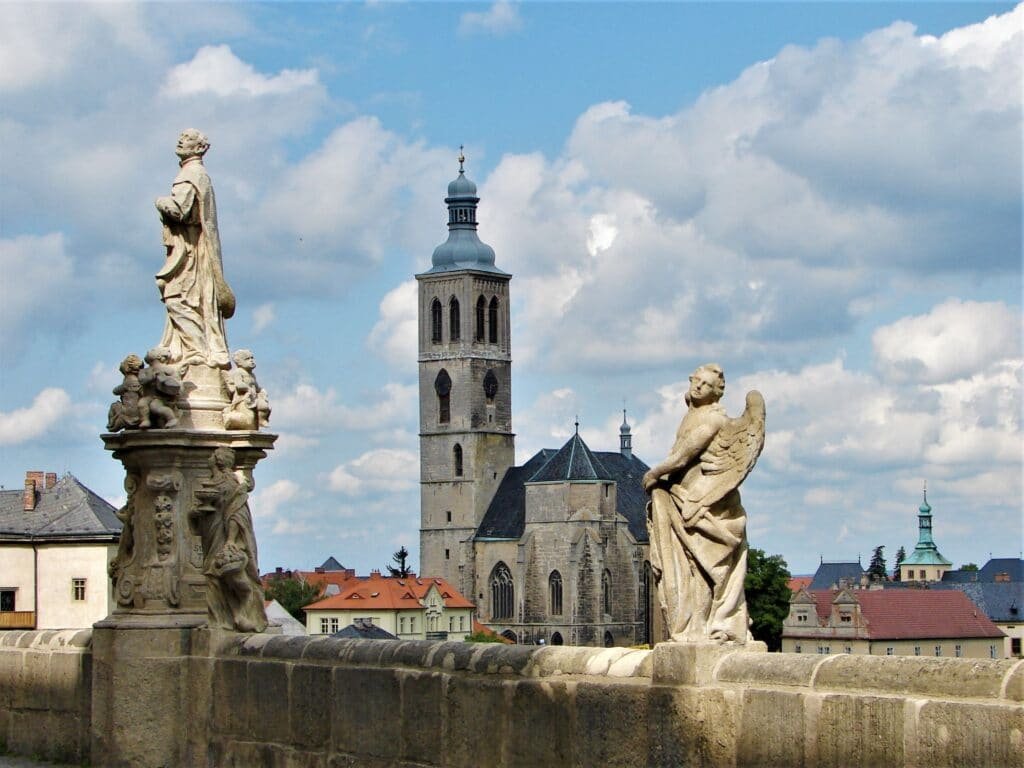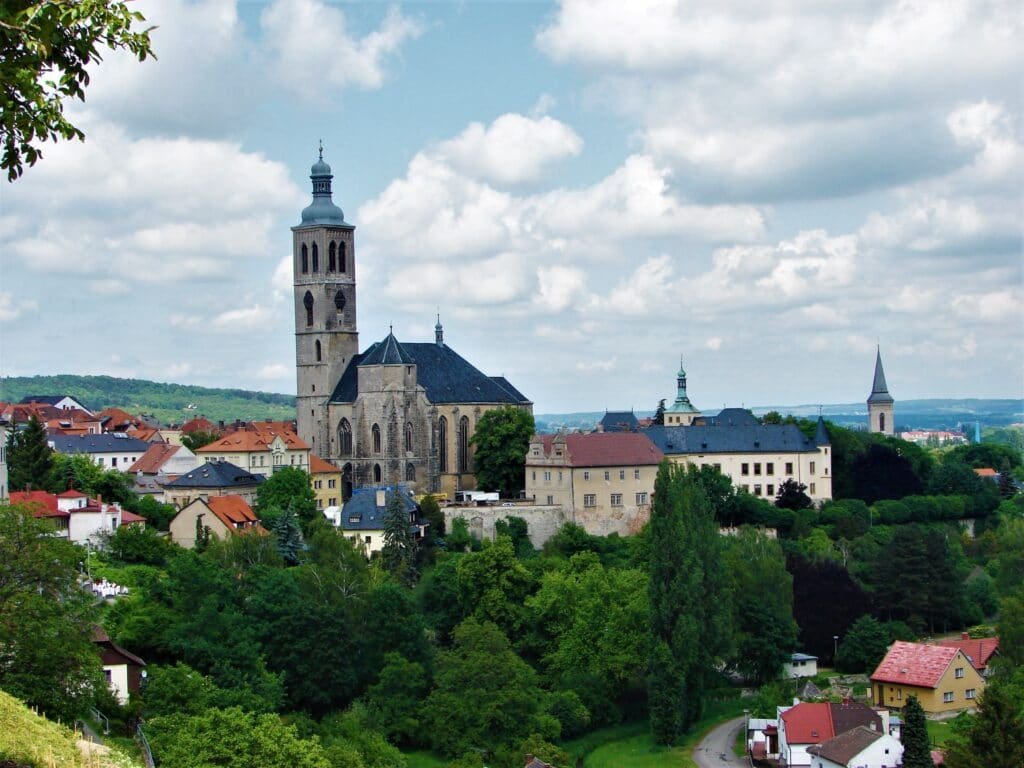“Cut! Stop! There's someone on the set”.
I look up and see actors in medieval dresses all around me. And someone from the production crew runs toward me, frantically pointing to the sidewalk.
“Oh, shit.”
Walking in quiet contemplation and examining Kutná Hora's cobblestone streets, I got so lost in my thoughts that I didn’t notice that this beautiful Czech town was being used as a movie set. And just like that, my not-very-medieval character wearing a North Face backpack walked into a medieval movie scene.
Watching the chaos I unintentionally created, I apologized and quickly crossed to the other side of the street. The actors were now taking an unintended break, courtesy of this unsuspecting traveler. I look around and see why a movie is being filmed here. Kutná Hora is a delightful time capsule, taking you to the Middle Ages.



Kutná Hora was one of the day trips I took out of Prague. In addition to my adventure in Karlštejn that nearly cost me my life, I also visited Český Krumlov, a spectacular town by the Austrian border. I loved Český Krumlov, but going there on a day trip, instead of staying overnight, was a mistake. I spent a significant portion of my day traveling to and from Prague, leaving me with only four hours of rushed sightseeing. Kutná Hora, with its proximity to Prague (only an hour by train) and an abundance of sights, was a great day trip all around.
I started on the outskirts of the town, first stopping at the Sedlec Ossuary. This chapel, just a short stroll from the train station, is one of the top attractions in the Czech Republic and the main reason people come to Kutná Hora. The chapel is not your everyday cookie-cutter church. It's the resting place of the remains of more than 40,000 people, and it's decorated... well ... with the remains of these people.
In a morbidly bizarre, yet strangely artistic way, bones and skulls are displayed throughout the chapel. The early history of the chapel reflects the grim European history of the Middle Ages. As the Black Plague raged through Europe, thousands of people were buried, often in mass graves, in the abbey's cemetery. Once a new church was built in the middle of the cemetery, the exhumed bones recovered from the construction site were put into the lower-level ossuary for storage. The visitors’ brochure described a story of a half-blind monk who stacked and organized the bones in the ossuary.
But the person who put the chapel on the tourist map was František Rint.
In the second half of the 19th century, this talented Czech woodcarver and carpenter transformed the chapel from a mere bone storage into a whimsical, macabre chapel with bones and skulls exquisitely arranged into elaborate garlands, chandeliers, wall decorations, and even a coat of arms. In true artistic fashion, Mr. Rint even signed one of the walls with his name, the name of his hometown, and the date of his work, all in human bones, of course.
As I walked around the chapel admiring this masterpiece, it was evident that the human artistic spirit thrives under any circumstances and people are ready to utilize any medium readily available to them for their creative outlets: from drawing on cave walls at Montignac 20,000 years ago to spraying graffiti on concrete walls of industrial zones in the 21st century. And this chapel is another proof. Give an artist nothing but bones and skulls, and they will create something beautiful and memorable.
Later, I learned that following the Black Plague, bone ossuaries were common throughout Europe, and Kutná Hora wasn't the only place for such ghoulish artistry. Years later, while visiting Evora in eastern Portugal, we stopped by a similar bone church, albeit with less elaborate decorations. Julia, who was visiting such a place for the first time, was dismayed by what she saw and went on a rant about medieval monks who used somebody’s bones and skulls without permission to essentially create religious propaganda.
I was just relieved that the gift shop didn't sell human bone souvenirs.

After the Sedlec Ossuary, I headed to the town center to explore its medieval architecture. The compact old town of Kutná Hora, a UNESCO World Heritage Site, with its neat streets, is a photogenic paradise. It's not surprising that so many movies are filmed here. Kutná Hora used to be a mining town and has been known as the Czech Silver City. In its heyday, with nearby silver mines working at full capacity, it was one of the wealthiest in Bohemia. Silver excavated here allowed for rapid development, including the construction of an imposing Gothic cathedral dedicated to (no surprise here) the patron saint of miners—St. Barbara. With money flowing plentifully, Kutná Hora even went toe to toe with Prague, competing for dominance in the region. Nowadays, there are no working mines here, and the efforts to overtake Prague have long been abandoned. But the town doesn't look like a depressing ghost mining town, with tourism and, occasionally, the movie industry supplementing the source of income for locals.
I spent the rest of my day strolling and admiring the medieval architecture, looking at the drawings and frescoes depicting mining activities on the walls of St. Barbara's church, and trying not to ruin any more movies. While Prague is a world-class city and deserves all the hype and tourists it gets, Kutná Hora presents a pleasant and easily doable day trip option for those who have some extra time and desire to venture a little bit off the beaten path.





